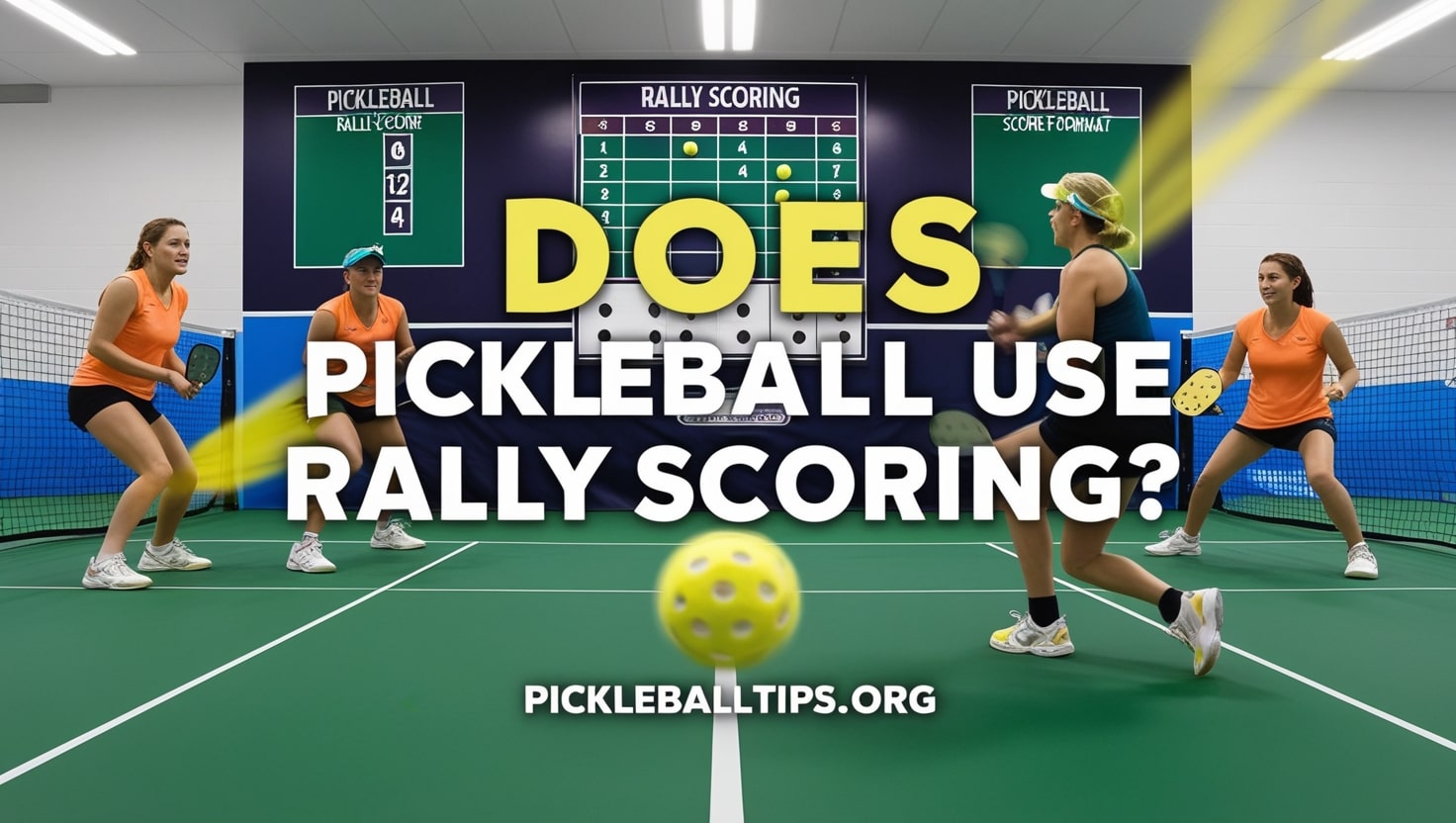If you’ve recently asked the question, “Does pickleball use rally scoring?”, you’re not alone. The scoring system in pickleball is one of the sport’s most intriguing aspects and has been a topic of debate and evolution over time. In this article, we’ll explore the concept of rally scoring, how it applies to pickleball, its advantages and challenges, and tips to master the game under this system.
Understanding Rally Scoring in Pickleball

Rally scoring is a scoring method where points are awarded on every rally, regardless of which team serves. This differs from traditional side-out scoring, where only the serving team can score points.
In pickleball, rally scoring has been introduced as an alternative format to make games faster, more exciting, and easier for beginners to grasp. While traditionalists may prefer side-out scoring for its strategic complexity, rally scoring has gained popularity in recreational play, tournaments, and experimental formats.
History of Scoring in Pickleball
Pickleball was initially designed with side-out scoring, which was influenced by badminton. Under this system, players could only score points during their service. Games were slower-paced and often extended, requiring strategic maneuvering to win service opportunities and convert them into points.
The rally scoring format was introduced in recent years as pickleball expanded its appeal to a broader audience. This alternative format aligns with scoring methods used in other sports like volleyball and table tennis, which makes it more accessible for players familiar with these games.
>>> Do Pickleballs Float? Everything You Need to Know
How Rally Scoring Works in Pickleball
In rally scoring, the scoring rules are slightly modified:
- Point Per Rally: A point is awarded to the winner of each rally, regardless of which team served.
- Game Objectives: Games are typically played to 15 or 21 points instead of the traditional 11, although variations exist.
- Side Change: Teams switch sides after reaching certain point thresholds, such as every 7 or 11 points, depending on the game’s length.
For example, if Team A serves and Team B wins the rally, Team B scores a point and gains the serve. This keeps the action dynamic and ensures continuous progress in the game’s score.
Benefits of Rally Scoring
Rally scoring offers several advantages, making it a compelling choice for many players and organizers:
1. Faster Games
Rally scoring ensures that every rally contributes to the game’s progress, making matches quicker and more predictable. This is particularly advantageous for tournaments with multiple games.
2. Beginner-Friendly
New players often find rally scoring easier to understand since they don’t need to track service positions or scoring opportunities as closely as in side-out scoring.
3. Enhanced Engagement
With a point awarded on every rally, players and spectators stay engaged throughout the match. The fast-paced nature of rally scoring adds excitement to the game.
4. Alignment with Other Sports
Players transitioning from sports like volleyball or table tennis often appreciate the familiar rally scoring system, which reduces the learning curve.
Challenges of Rally Scoring in Pickleball
While rally scoring has its advantages, it also introduces some challenges:
1. Reduced Strategic Depth
Side-out scoring requires a strategic approach to securing and maintaining the serve. Rally scoring eliminates this aspect, which some players find less appealing.
2. Shorter Matches
While faster games can be a benefit, they can also reduce the opportunity for long, drawn-out battles that many players enjoy.
3. Adapting Rules
Switching between rally and side-out scoring can confuse players and referees, particularly in settings where both formats are used.
Rally Scoring in Tournaments
Rally scoring has been adopted in various tournament formats to accommodate tight schedules and large participant pools. For example, rally scoring is often used in round-robin play or during qualifiers to ensure games remain timely.
However, championship matches frequently revert to side-out scoring to preserve the traditional format’s strategic depth and excitement. Tournament organizers typically specify scoring rules in advance to avoid confusion.
Tips for Success in Rally Scoring Games
Mastering rally scoring requires slight adjustments to your pickleball strategy. Here are some tips:
- Stay Aggressive: Since every rally counts, maintaining consistent pressure on your opponents is crucial.
- Minimize Errors: Mistakes are costlier in rally scoring, so focus on playing high-percentage shots and reducing unforced errors.
- Adapt Quickly: Rally scoring games move fast, so adapt your tactics based on your opponents’ strengths and weaknesses.
- Communicate with Your Partner: Effective communication ensures better coordination, especially when defending or transitioning.
- Stay Focused: Every rally matters, so mental focus is essential from the first point to the last.
Does Pickleball Use Rally Scoring Exclusively?
The answer is no—pickleball does not use rally scoring exclusively. While rally scoring is gaining traction, traditional side-out scoring remains the default for many leagues and tournaments. Both formats coexist, offering players and organizers flexibility based on their preferences and needs.
If you’re new to pickleball or exploring different scoring formats, try both systems to understand their nuances and identify which suits your playstyle best.
The Future of Rally Scoring in Pickleball
As pickleball continues to grow, rally scoring may become more widespread. Its simplicity and accessibility align with the sport’s goal of being inclusive and easy to learn. However, preserving side-out scoring ensures that pickleball retains its unique strategic complexity, which many players cherish.
Organizations like USA Pickleball and the International Federation of Pickleball are closely monitoring the impact of rally scoring, conducting trials, and gathering player feedback. This approach ensures that any potential changes to official rules reflect the community’s preferences.
Conclusion
Rally scoring is an exciting alternative that brings faster-paced action and accessibility to pickleball. While it’s not the exclusive scoring format, it has found its place in recreational play and tournaments. Whether you’re a beginner or a seasoned player, understanding rally scoring can enhance your appreciation and enjoyment of the game.
Thank you for taking the time to read this article on pickleballtips.org. We hope it answers your question, “Does pickleball use rally scoring?” and provides valuable insights to improve your game. Happy playing!
